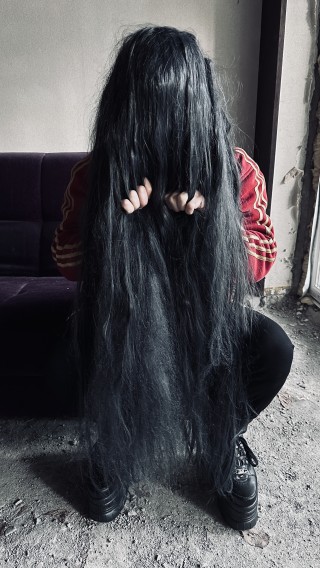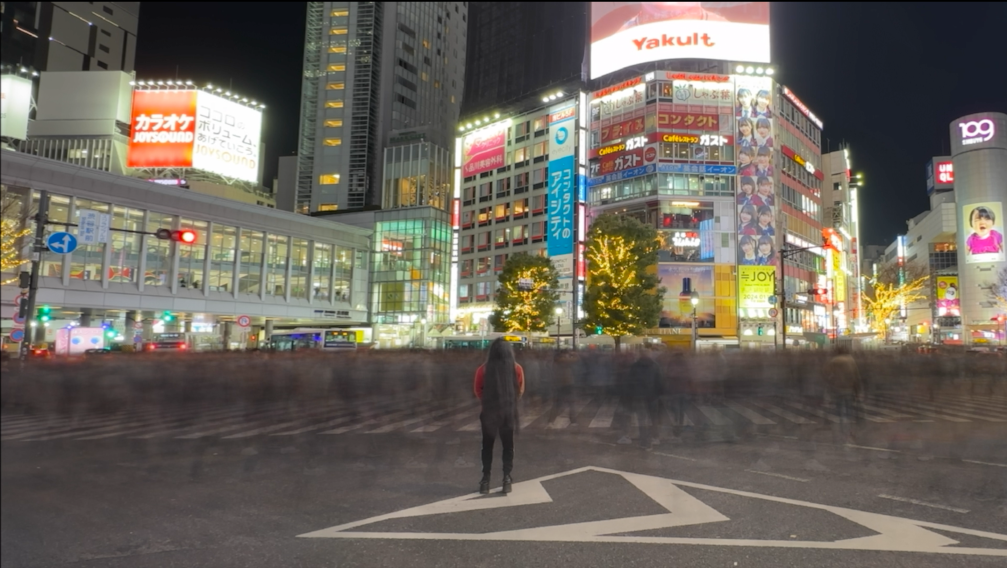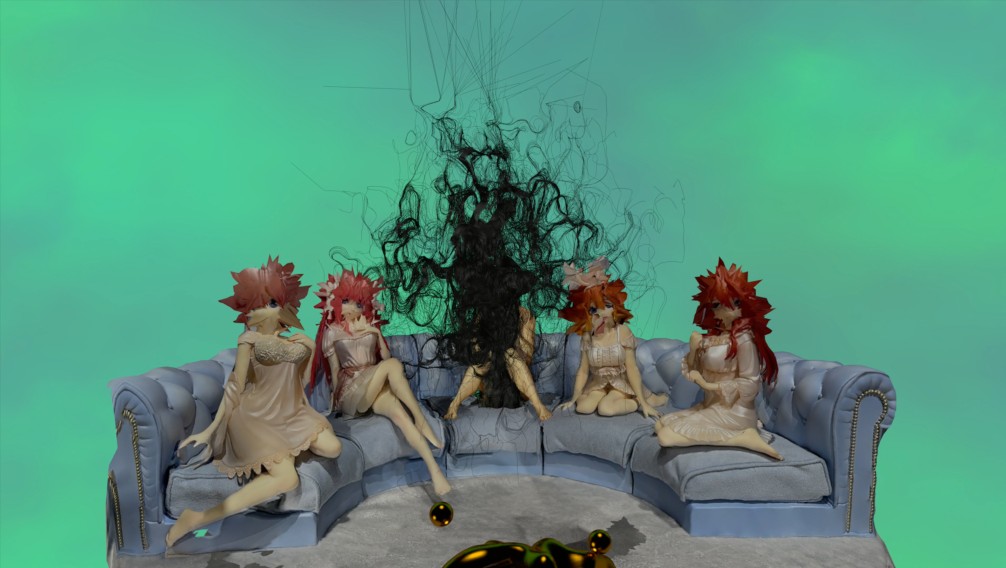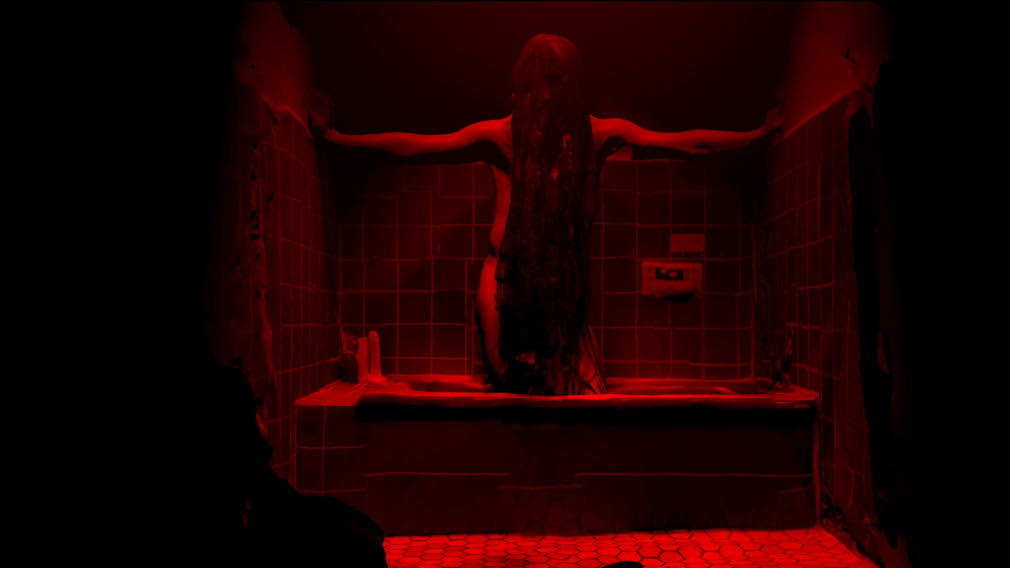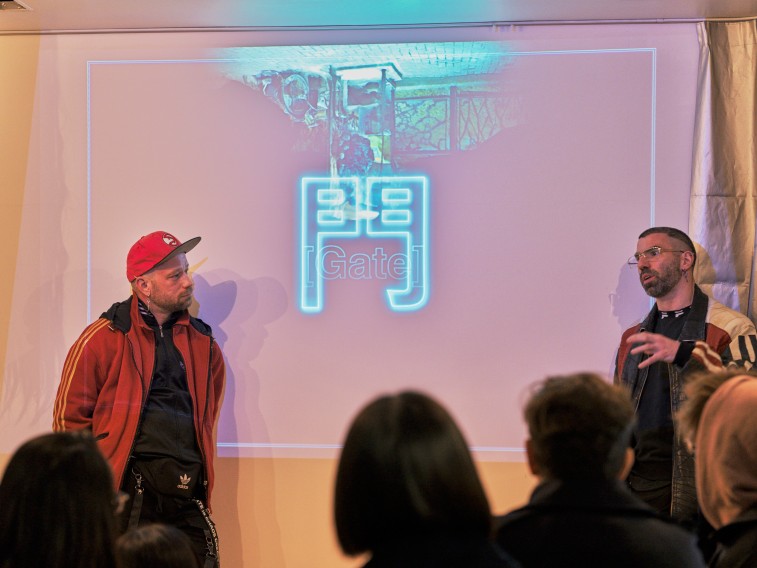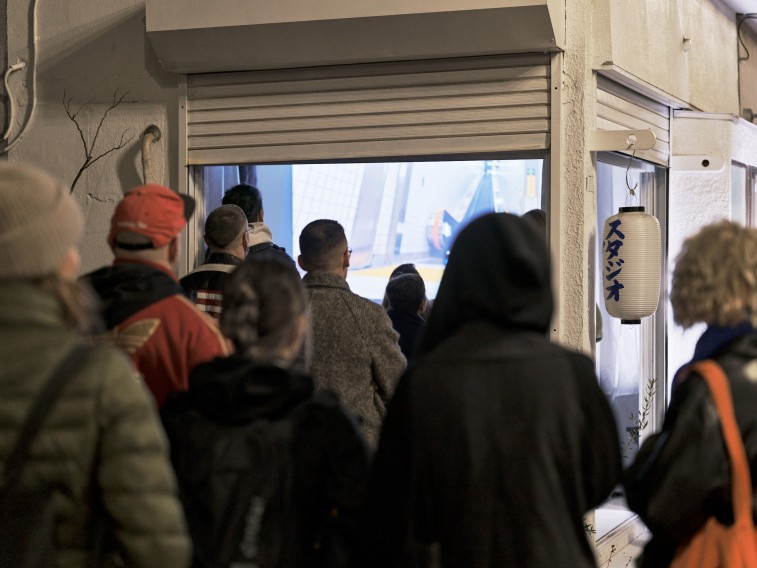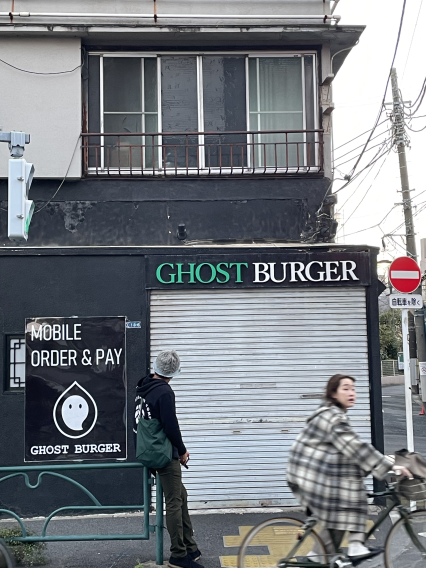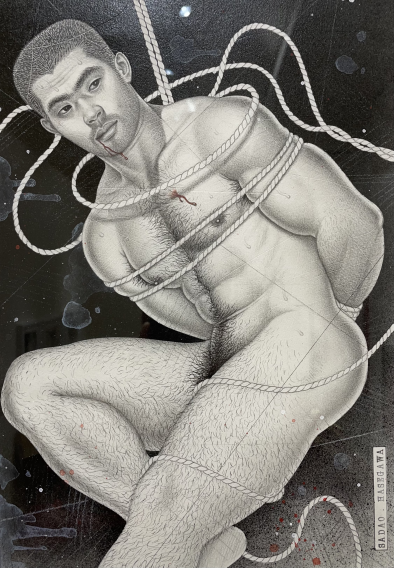Milan Loviška und Otto Krause
Just a few days after our arrival in Tokyo we already started working on our residency project. The idea was to develop a short, experimental, non-narrative film focusing on paranormal phenomena in Japan. The original title of the project was Psi, but we decided to rename it by using the Japanese kanji character for “gate”. The inspiration came from the understanding of gates and portals as transition points between different levels of reality, worlds (physical, spiritual, digital, etc.), meanings and so on. Moreover, gate structures are ubiquitous in Japan, especially as an important architectural element of religious buildings.
We started by searching online for allegedly supernatural places in Tokyo and found a good number of them, usually with a history of various apparitions. We visited some of them, for example Horyuji-zaka (ghost slope) in Shinjuku, the neighborhood of the former Tamai Hospital in Shibuya, the Sendagaya Tunnel, the telephone booth no. 546 in the Mizumoto Park and the grave of the beheaded samurai Taira no Masakado close to the Imperial Palace in Tokyo. We shot various scenes not only there but also in other places that had a supernatural aura for us, such as the Shibuya Scramble Crossing and, above all, our own studio building.
Once again, the language barrier proved to be the ultimate obstacle when we tried to learn more from local experts about the cultural, historical and religious implications of supernatural phenomena in Japan. Therefore, we had to rely on various online resources and information that we found during our adventures in the city and the countryside. Nevertheless, we learned a lot about the significance of ghosts in Japanese culture and everyday life. Often, the stories tell of vindictive ghosts or people who cannot let go of the world of the living, but also of great suffering and sorrow. The Japanese take this very seriously and respond with numerous rituals and behaviors that serve not only for righting a wrong but also for parting from their deceased loved ones in a culturally and spiritually appropriate way. Our creative process focused on the character of Yurei, a female ghost with long black hair. Hair is very important in Japanese society, especially for women, with its meaning and character changing in the course of history.
Shooting largely took place in January, with additional scenes being filmed in February and March. The material was edited in parallel to shooting, but still most of this work was performed in the last weeks. All animations were created in February and March. The final outcome was presented to the public at Studio Gross on March 23, 2024. It was agreed to show the exhibition until March 26. The first screening of the film and the opening of the exhibition were very well attended and the response to our work was very positive.
| 1. | Our stay in one word: |
| Hot | |
| 2. | Dos & don’ts in this place: |
| Be respectful and do as the locals do. See as much as you can in the city and travel around the country, too. If there is an earthquake, don’t panic. | |
| 3. | Things we miss since we are no longer there: |
|
|
| 4. | Where to shop great supplies: |
| Assistwig at Higashiikebukuro, Toshima City – huge selection of cosplay and wigs. | |
| 5. | What you should definitely bring with you from home: |
| Basic knowledge of Japanese recommendable. | |
| 6. | Concerning art at this destination and where we visited the best exhibitions: |
| We saw numerous exhibitions of traditional, modern and contemporary Asian art, including traditional embroidery, costumes and architecture. The museums and galleries we visited included, for example, the Tokyo National Museum, the National Museum of Modern Art Tokyo, the Tokyo Metropolitan Art Museum, the Nezu Museum, the Museum of Contemporary Art Tokyo, the Sumida Hokusai Museum, the Tokyo Metropolitan Teien Art Museum, the Bunka Gakuen Costume Museum, the Sumo Museum, Asakura House and many small galleries and art spaces. Moreover, we also saw science-oriented exhibitions at the National Museum of Emerging Science and Innovation (Miraikan) and the Meguro Parasitological Museum. In late March, we had the opportunity to experience three types of traditional Kabuki at the Kabuki-za Theater as well as a Noh play in Tokyo. It also was important to us to get to know local queer culture. We went to a vogue ball in Tokyo and an exhibition at the Naruyama gallery in Tokyo that introduced us to the fascinating work of Sadao Hasegawa. Tokyo as well as other Japanese cities have numerous art installations in public space. We saw many of them, but one of the most inspiring ones was the life-sized robot statue UNICORN GUNDAM in Tokyo. | |
| 7. | Around the studio – where we shop, drink our coffee and get the best lunch deal in walking distance: |
| We mainly shopped at the Life super market behind the building as it is affordable and very well stocked. Fruits and vegetables are less expensive at the daily market in the shopping street in which Studio Gross is located. The post office is there as well. It is very inexpensive to eat out. The problem, however, is that Japanese cuisine is almost exclusively based on meat and that it is very difficult and in some cases almost impossible for people with dietary restrictions to find affordable places offering alternative Japanese cuisine in the vicinity. We can recommend Ippudo Lumine Est in Shinjuku for inexpensive vegan ramen. Vegetarian Japanese curry is offered by the restaurant chain CoCo Ichibanya which has many outlets. Buying clothes and shoes is not really inexpensive, but you can find affordable alternative fashion, including shoes and accessories, especially in Harajuku and Shibuya. Second-hand and vintage shops are very popular, frequently sell high-grade brands and labels and are very expensive. For anime- and manga-related products, you can go to Nakano Broadway or Akihabara. | |
| 8. | Where we like to spend the evening (dinner, drinks, best sound and networking opportunity): |
| Shinjuku Ni-chōme – Tokyo’s center of the gay subculture that has the highest concentration of gay bars worldwide. Within the five blocks located in Naka-Dōri street between the BYGS building at the Shinjuku San-chōme train station and the small Shinjuku Park three blocks further east, roughly 300 gay bars and night clubs provide entertainment. | |
| 9. | What would have been useful to know before coming here and starting our residency: |
| BMKOES offers much information, especially on what you should take along and on living conditions on site. |
IG: @territorium_kv
Photo credits: Go ITAMI, Territorium KV, 2024
Website resident: www.loviska.com


